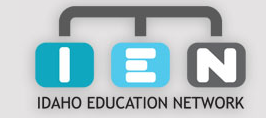The reach of the Idaho Education Network continued to grow last fall.
In all, 1,850 students took classes offered over the statewide broadband network, a 131 percent increase from the fall of 2011. “That was pretty staggering,” said Julie Best, the IEN’s communications director.
Now, for the IEN, the challenges are twofold: expanding broadband access to junior high schools and grade schools across the state; and encouraging high schools to make the fullest use of broadband.
Here are a few statistics from the IEN’s latest quarterly report:
- 178 classes were offered over the IEN last fall, and 65 percent were dual credit or advanced placement classes.
- Of the 3,776.5 credits earned over the IEN, 2,830 were in dual credit classes.
- The dual credit classes come out to 88 years’ worth of college credit (assuming a college courseload of 32 credits per year) and $432,990 in savings (a savings or $153 per credit).
 But while the dual credit continues to grow — and remains the bulk of the coursework completed over the IEN — more school districts are also using the network to share hard-to-find core classes. That includes science — no small challenge, since teachers still have to figure out how to get hands-on materials to students in multiple schools. That also includes foreign languages: classes that are often hard to fill, especially in smaller high schools.
But while the dual credit continues to grow — and remains the bulk of the coursework completed over the IEN — more school districts are also using the network to share hard-to-find core classes. That includes science — no small challenge, since teachers still have to figure out how to get hands-on materials to students in multiple schools. That also includes foreign languages: classes that are often hard to fill, especially in smaller high schools.
Another encouraging statistic, from Best’s perspective, is usage of the IEN’s equipment.
In all, 241 teleconferencing units have been installed in Idaho high schools; every school that teaches 12th grade has at least one of these units. About 61 percent of the schools use the units at least weekly.
However, about 10 percent of the units remain dark, so the IEN is trying to encourage schools to think of new ways to use the technology, beyond coursework.
One option is to use the IEN in an area all schools must face: professional development. IEN can be a tool for training, Best said, in areas such as Common Core.
One option is to use IEN technology for projects. For instance, Cambridge schools are taking part in the Presidential Primary Sources Project, a yearlong research project on the presidency, co-sponsored by presidential libraries and museums.
“The video conferencing capabilities are limited only by imagination,” the IEN says in its quarterly report.
